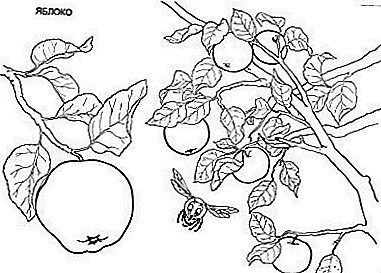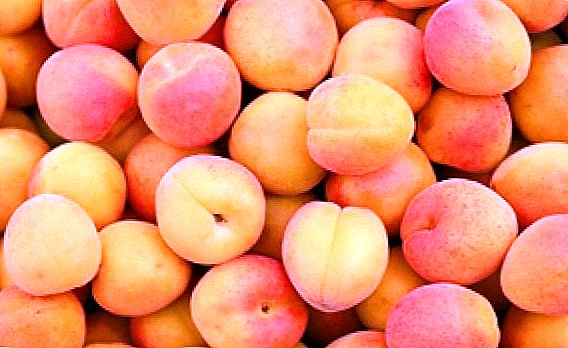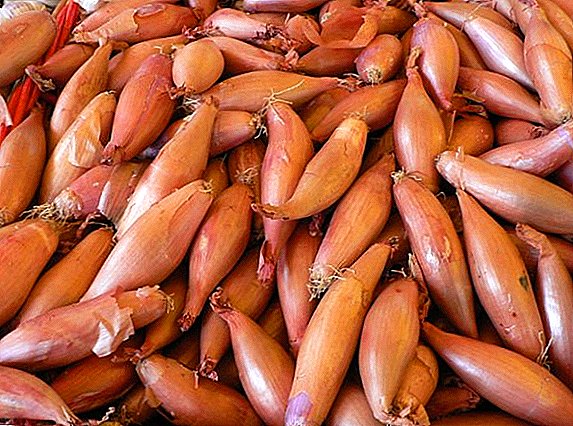 Each owner of the poultry yard must be prepared for the difficulties that may arise in his household. It is necessary to be aware of not only what to feed the poultry and in what conditions to contain it - it is also necessary to know what diseases chicks can get and how to fight them. We will discuss infectious bronchitis, its symptoms and treatment methods.
Each owner of the poultry yard must be prepared for the difficulties that may arise in his household. It is necessary to be aware of not only what to feed the poultry and in what conditions to contain it - it is also necessary to know what diseases chicks can get and how to fight them. We will discuss infectious bronchitis, its symptoms and treatment methods.
Chicken Infectious Bronchitis Virus
Infectious bronchitis of chickens was detected in the United States as early as the 1930s. Since then, disease outbreaks have occurred on chicken farms around the world. She can get sick birds of different ages: both chickens and adult chickens. This disease is characterized by a very rapid spread. Affected chickens suffer from disorders of the respiratory system, kidney and reproductive system.  The complex IB virus contains RNA and belongs to the family of coronaviruses. Scientists distinguish about 30 strains of this virus. It is very tenacious and is not afraid of low temperatures. In the bird's corpse, the virus is quickly inactivated, but on the surfaces of objects in the chicken coop can remain active for quite a long time: at temperatures up to + 23 ° C, it lasts for about a week, at sub-zero temperatures it can survive for a month, and at -30 ° C it can live for several years.
The complex IB virus contains RNA and belongs to the family of coronaviruses. Scientists distinguish about 30 strains of this virus. It is very tenacious and is not afraid of low temperatures. In the bird's corpse, the virus is quickly inactivated, but on the surfaces of objects in the chicken coop can remain active for quite a long time: at temperatures up to + 23 ° C, it lasts for about a week, at sub-zero temperatures it can survive for a month, and at -30 ° C it can live for several years.
Read also about how to treat non-communicable and infectious diseases of broiler chickens.
High temperatures are destructive for the virus: at + 37 ° С it is inactivated for several days, and the temperature + 56 ° С kills the pathogen quickly (10-30 minutes). The virus dies under the influence of ultraviolet and infrared radiation, as well as various disinfectants (solutions of bleach, formaldehyde, formalin and phenol).
Did you know? There are about 20 billion chickens on the planet, which is 3 times the number of people and 20 times the number of pigs.
The causes of illness in birds
Were recorded cases of infection with IB virus in pheasants and quail. Yet the most susceptible to this disease are domestic chickens. Chicks up to 1 month and young layers are especially sensitive. The source of the virus is a sick bird. Dangerous and those chickens who have had a disease. The data on how long they are virus carriers differ: according to one report - all my life, according to others - several months. 
The infection is transmitted in different ways:
- through discharge of sick chickens: saliva, mucus from the nose, droppings;
- aerogenic way, that is, through the air;
- contaminated food: through food, water;
- through infected eggs;
- through infected poultry farm equipment, chicken litter, clothing, and equipment of workers.
Poultry owners often face problems like diarrhea and worms in chickens. Find out what causes and methods of treatment of these ailments.
The following conditions contribute to the spread of IBV:
- violations of veterinary and sanitary standards in the content of hatching eggs and chickens;
- high concentration of livestock in the hen house;
- improper feeding - a large amount of protein in the feed;
- drafts, hypothermia and stress.
Chicken diseases - their description and treatment.
Symptoms of viral disease
All symptoms of IBD can be divided into three syndromes: respiratory, nephro-nephritic and reproductive. They appear depending on the age of the bird and on the strain of the coronavirus. For example, respiratory syndrome is the initial stage of the disease and is present in chickens of all ages, but chickens suffer more from it. A reproductive syndrome is characteristic only for adults. 
Respiratory syndrome
Respiratory symptoms manifest themselves before others, almost immediately after infection. Therefore, the disease is often confused with a cold and called it bronchitis. Respiratory symptoms include: cough, wheezing, rhinitis, nasal discharge, shortness of breath, conjunctivitis. Thermal control is violated in chickens, so they lump together and stretch to heat. They are lethargic, with wings down, breathing with their open beak.
Conjunctivitis in chickens - how to properly treat.
Respiratory IB syndrome occurs in youngsters acutely, often with a fatal outcome. Two-week-old chicks may die from choking with fluid that has accumulated in the trachea. In chicks up to 1 month, the mortality from bronchitis is up to 30%. Older chickens recover after 1-2 weeks, but their growth slows down. In adult birds, respiratory signs may be hidden.
Nephrosonephritis syndrome
If infection with one of the nephropathogenic strains occurred, then after two weeks the nephrosonephritic syndrome begins to manifest itself, in which the kidneys, ureters are affected and uric acid salts are deposited. Broiler chickens are the most susceptible to it. Respiratory symptoms in them pass fairly quickly, and the second stage of the disease is acute. Chickens have depression and diarrhea, ruffle feathers and drink plenty of water. At this stage of the disease, the mortality rate can increase to 70%. 
Reproductive Syndrome
Unlike the respiratory syndrome, which can occur unnoticed, and nephrosonephritic syndrome, signs of which may not be observed at all, the reproductive syndrome is an obligatory manifestation of IBC. After recovery, the durability of eggs is restored, but not completely. The productivity of eggs deteriorates quantitatively and qualitatively:
- egg production drops by 35-50%;
- the number of hatched chicks decreases;
- most eggs are not suitable for incubation: they have a deformed or soft shell with a lime scale, and the content is watery;
- terms of hatching and incubation of eggs are violated.
 Consequences of the disease
Consequences of the diseaseEconomic damage and consequences
Infection of chickens IBC causes serious economic damage to the farm. Causes of material losses:
- slow growth and development of chickens;
- high mortality: if the disease passes along with nephrosonephritis syndrome, the level of death is 70-90%;
- forced destruction of rejected chickens (20-40%);
- significant decrease in productivity: 20-30% is egg production in laying hens that had had their productivity at the initial stage;
- poor quality eggs for incubation and food;
- treatment costs and restrictive measures in the hen house.
Important! It is not recommended to use the eggs of ill chickens for incubation. For food use, eggs should be treated with formaldehyde vapors.
Diagnostics
Diagnosis of IBS is complicated by the fact that similar clinical signs (respiratory and reproductive) can be manifestations of various diseases: smallpox, Newcastle disease, laryngotracheitis, and respiratory mycoplasmosis. Therefore, the virus must first be isolated and identified. To establish an accurate diagnosis, you need to conduct a series of laboratory tests. At least 5 diseased chickens and serum samples of sick birds should be sent to the laboratory for analysis (15-25 samples).  Also from live chickens take swabs from the larynx and trachea, and the dead - pieces of tissue: the larynx, trachea, lungs, kidneys and oviduct. Not to do without serological studies: enzyme immunoassay and molecular biological analyzes, indirect hemagglutination and neutralization of embryos to isolate the virus. Only as a result of complex diagnostics can we obtain accurate data about the disease.
Also from live chickens take swabs from the larynx and trachea, and the dead - pieces of tissue: the larynx, trachea, lungs, kidneys and oviduct. Not to do without serological studies: enzyme immunoassay and molecular biological analyzes, indirect hemagglutination and neutralization of embryos to isolate the virus. Only as a result of complex diagnostics can we obtain accurate data about the disease.
Did you know? After decapitation, the chicken can live from several minutes to several days. In 1945, the famous cock Mike, who had lived without a head for 18 months, became famous - the owner fed him through a pipette.
Poultry treatment
As well as diagnosis, the treatment of IB should be complex. It includes:
- medications;
- disinfection of the room;
- creating the right atmosphere in the hen house.
Since there is still no effective cure for IB, use veterinary drugs that fight the symptoms of the disease:
- "Anfluron", antiviral agent: intramuscularly or inward, the course is a month;
- Primer vaccine: can be given from birth;
- "Iodinol", or blue iodine: fights against various viral infections.
 Disinfecting a room includes spraying iodine-containing products in the hen house. It can be:
Disinfecting a room includes spraying iodine-containing products in the hen house. It can be:
- "Glutex";
- aluminum iodide;
- Lugol solution.
For disinfection of the room use other means:
- hot soda (3% solution);
- chlorine-containing lime (6%);
- formaldehyde (0.5%);
- chlorosypidar.
Find out what is dangerous and how to treat diseases of chickens such as: colibacteriosis, pasteurellosis and Newcastle disease.
One of these solutions should be treated walls, floor and ceiling in the house. The procedure is carried out twice a week. To create the right atmosphere in the chicken coop, the following measures are necessary:
- eliminate drafts;
- provide ventilation;
- maintain the correct temperature;
- feed properly: keep fresh greens in the feed, add vitamins and minerals and give clean water;
- time to isolate sick birds from healthy;
- to reject recovered chickens and chickens.

Important! The poultry farm will be considered safe no earlier than 3 months after the end of the last disease.
Virus prevention
IBV virus multiplies in damp, poorly ventilated and dirty rooms and affects birds with weak immunity. Therefore, preventive measures can be counted:
- proper nutrition - balanced food with the necessary amount of vitamins and minerals;
- keeping the chicken coop clean with proper temperature and ventilation;
- timely vaccination by the following means - Pulvak IB Primer, H-120, H-52, MA-5, 4/91.
Infectious bronchitis chickens - a dangerous disease that is difficult to treat. It causes special damage to large poultry farms, as it causes egg production and mortality among birds to increase. But if you adhere to preventive norms, you will avoid large losses.












